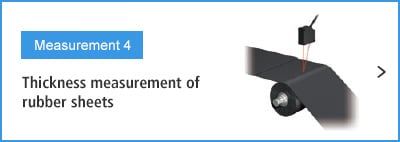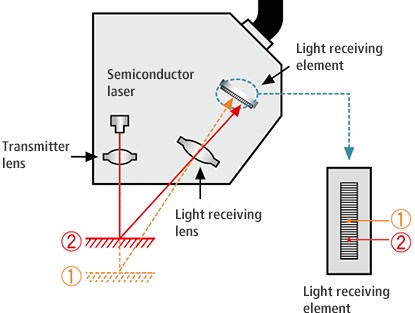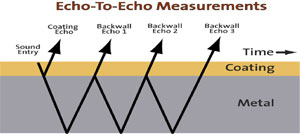Laser Thickness Measurement Principle

It is a non contact technique used to measure materials thickness detect flaws and carry out materials characterization.
Laser thickness measurement principle. The basic components of a laser ultrasonic system are a generation laser a detection laser and a detector. It provides fast and reliable thickness measurements and s p c. One sided thickness measurement of transparent materials. The eddy current principle is used in models marked with n or fn n non ferrous e g.
The microtrak 3 tgs system uses the principle of laser triangulation to perform a one dimensional measurement of a target. The agt800 laser pipe pole measuring system is designed for measuring wall thickness. Laser ultrasonics uses lasers to generate and detect ultrasonic waves. Besides measuring the diameter of a round product laser based measuring devices can also be used for measuring a wall thickness.
The laser projects a beam of light onto a surface which is then reflected back. Reporting using the latest in laser triangulation technology. The confocal chromatic measuring principle enables thickness measurements of transparent materials such as glass. A cmos array detects the position of the returned beam and is converted into a distance measurement.
It can take 9 400 measurements per second and has a linearity of 0 05 of the full measurement range for most models. The eddy current principle enables the non destructive coating thickness measurement on non magnetic metal substrates eg. When deciding the best way to measure thickness it is important to consider factors such as the material target and type of measurement range accuracy speed. Thickness measurement with laser.
The thickness value is detected to micrometer accuracy using only a single sensor. Laser measurement sensors measure thickness of materials. The laser thickness gauge is susceptible to the effect of mechani cal deformation due to temperature changes and vibra tion. The ar100 is one of the smallest laser measurement sensors in the world.
Ultrasonic wall thickness measurement operating principle ultrasound is a pressure wave with a frequency greater than the upper limit of human hearing approximately 20 khz. The ultra compact ar100 comes with ranges from 10mm 0 4 in to 500mm 19 7 in with a single case size. The laser thickness gauge with high response and high measurement resolution provides thickness measurement of the overall length including the top edge of the steel plate being conveyed. A fan shaped laser beam is directed onto a high resolution ccd line.
Direct benefits realized through these measurements include. Aluminium aluminium alloys lead bronze copper brass zinc die cast zinc tin. Laserlinc uses ultrasonic frequencies from 2 25 mhz to 50 mhz. Thickness is the simplest measurement done with laser sensors.













































